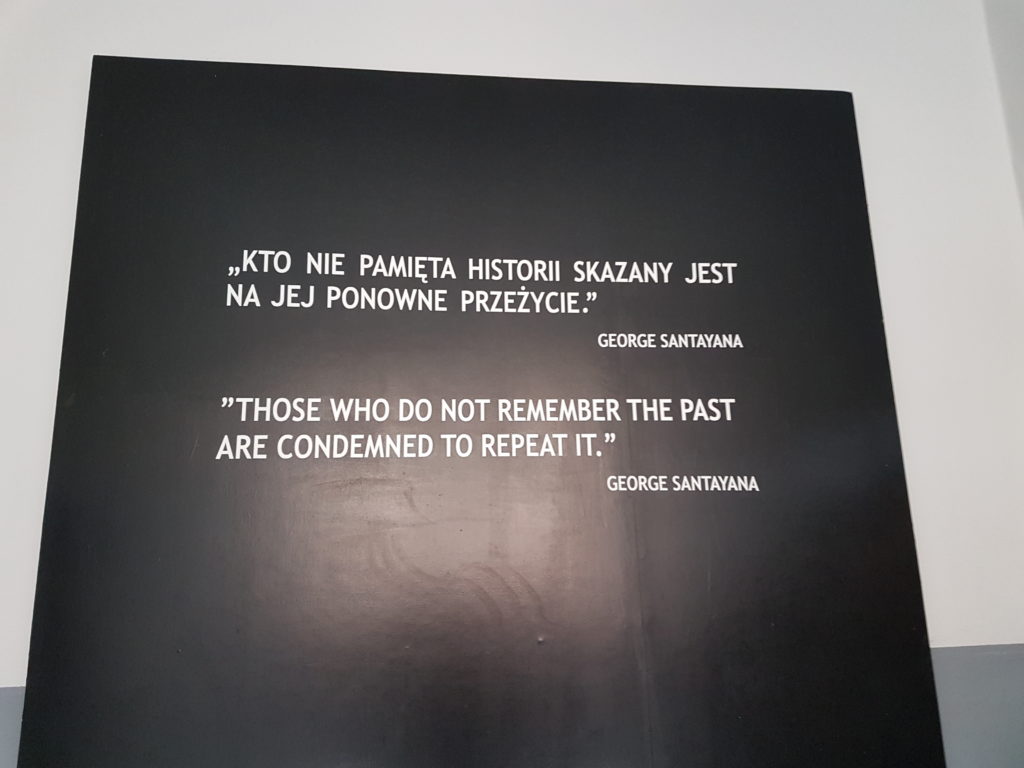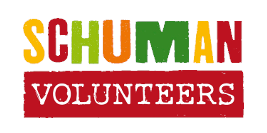– George Santayana
It was really difficult for me to write this post. It is difficult to put the feelings, which I felt there into words and it took me so long to find some. Even now, three weeks later, tears roll down my cheeks while I am writing this post. No words are enough to describe the cruelty. But it is necessary to talk about the holocaust, it’s necessary to remind, it’s necessary to not forget, because if we do it will happen again.
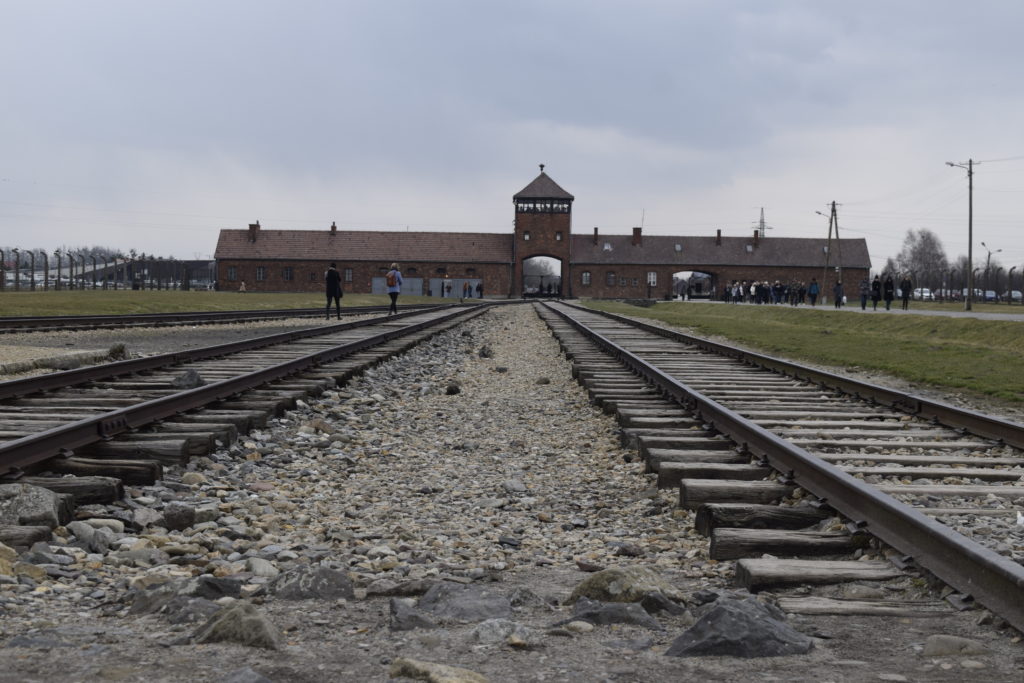
Some weeks ago I visited the memorial of Auschwitz-Birkenau. I was really happy to do it together with Benedikt (other Schuman volunteer from Germany) and not alone. Even if we didn’t talked much during the visit, I was glad to have someone to talk with if I would have wanted. We had booked a guided tour for 6 hours on Saturday after the week with all Schuman volunteers in Silesia. Saturday morning I woke up at 6 am, made myself ready and then we took the bus to Katowice and afterwards the train to Oświęcim. I had a strange feeling as we arrived in Oświęcim. An ominous strange silence filled this place. It is a city with around 40 thousand inhabitants and a daily life with shops, public transport and schools – but it’s far away from a normal city. You can’t deny that this place is permeated with history and a strange fatal feeling. It is like the calm before the storm – except the fact that the storm happened in the past.
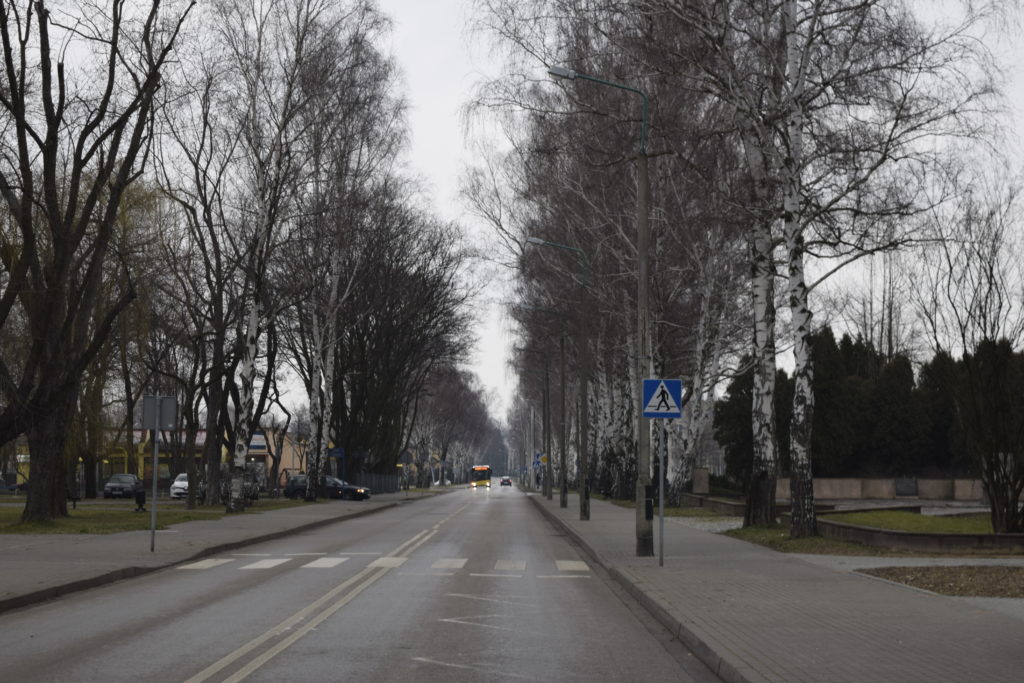
I thought the way from train station to the memorial of Auschwitz would be singed clearly, I thought a lot of people will take the way together with us, but surprisingly we took a normal public transport bus and were the only ones walking afterwards. That underlined the strange feeling even more. But as we arrived we saw a lot of cars and coaches and people queueing. Thanks to our tour tickets it was easier and faster to enter as I thought. As we passed the security check, like in an airport, we got our headphones and a sticker, which marked us as a part of the German tour.
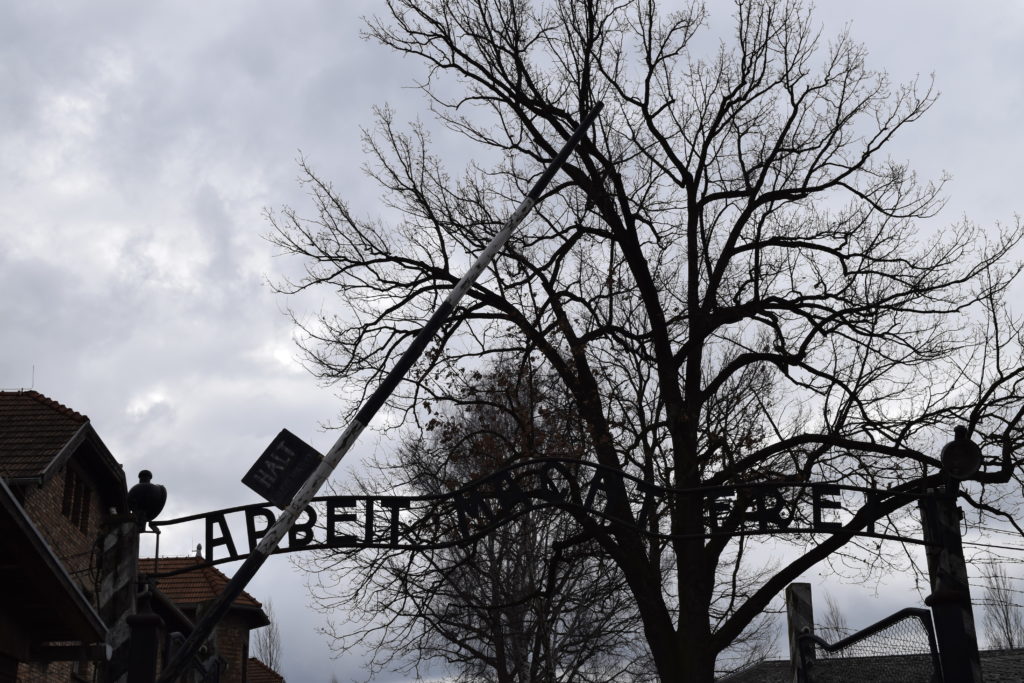
Our tour started in Auschwitz I, the main camp. The famous sentence “Arbeit macht frei” on top of the entrance welcomed us – seen so many times in movies or series before, strange to see it in reality now.
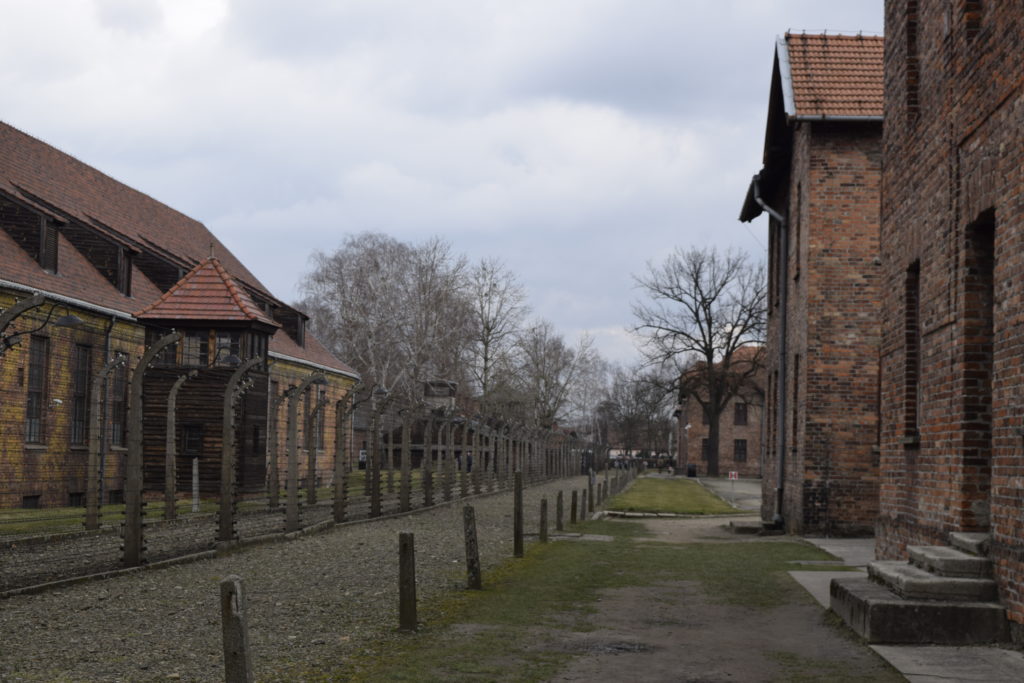
Auschwitz was different from what I expected, but not less horrific. We visited a few of the brick buildings, in which exhibitions found place.
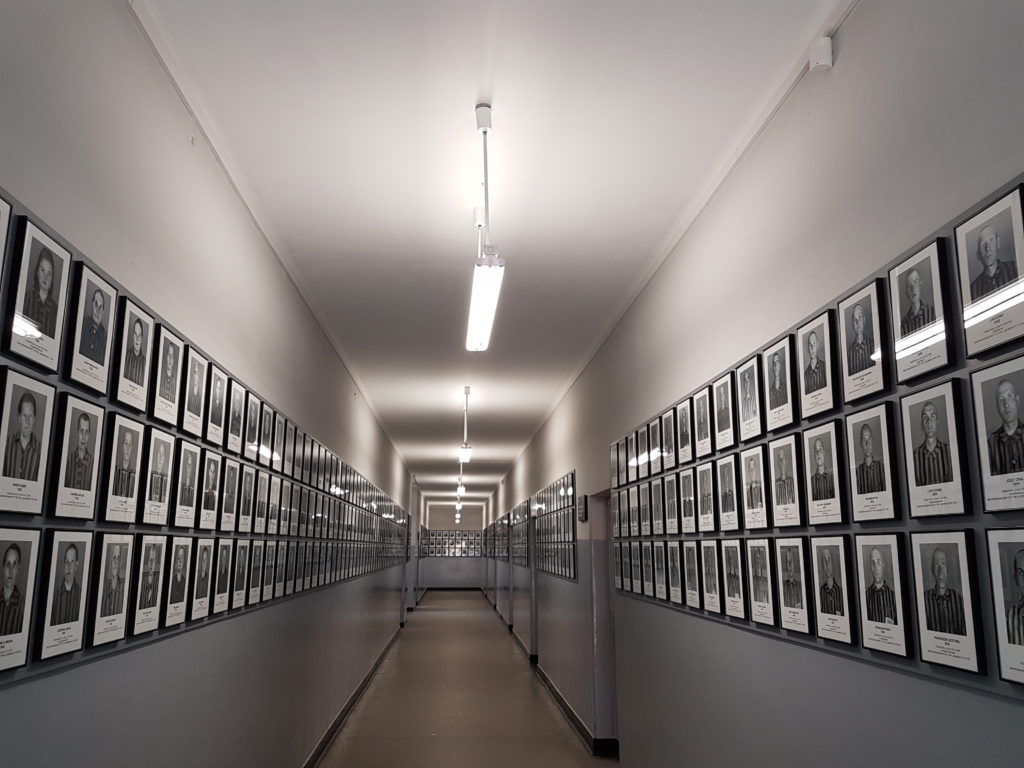
pictures of prisoners – in the beginning all prisoners of Auschwitz were registrated and photographed.
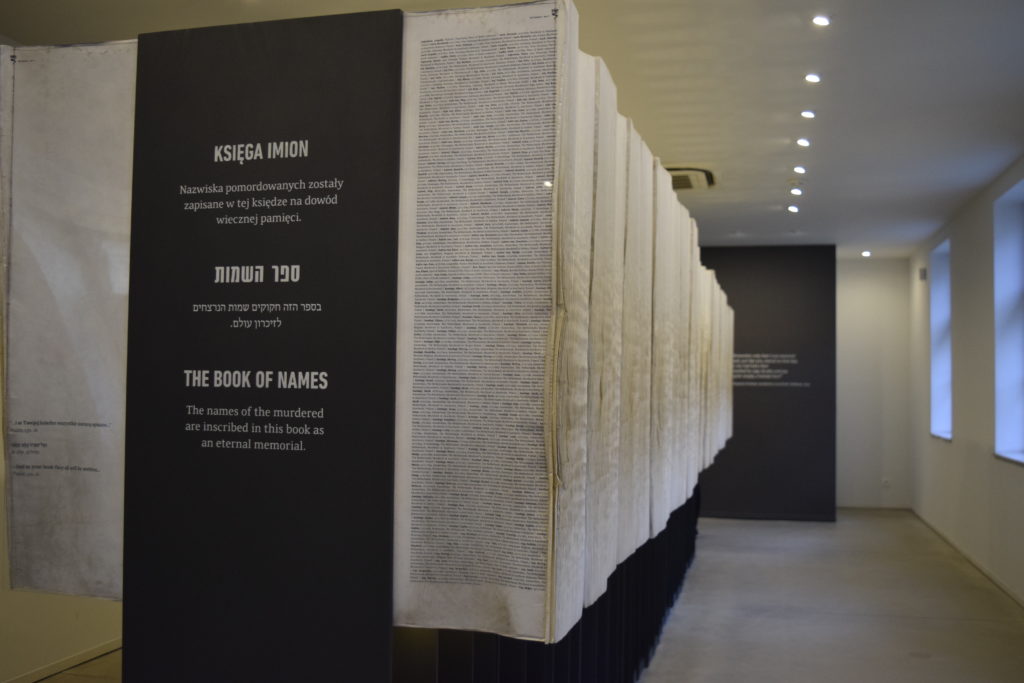
“THE BOOK OF NAMES – The names of the murdered are inscribed in this book as an eternal memorial.”
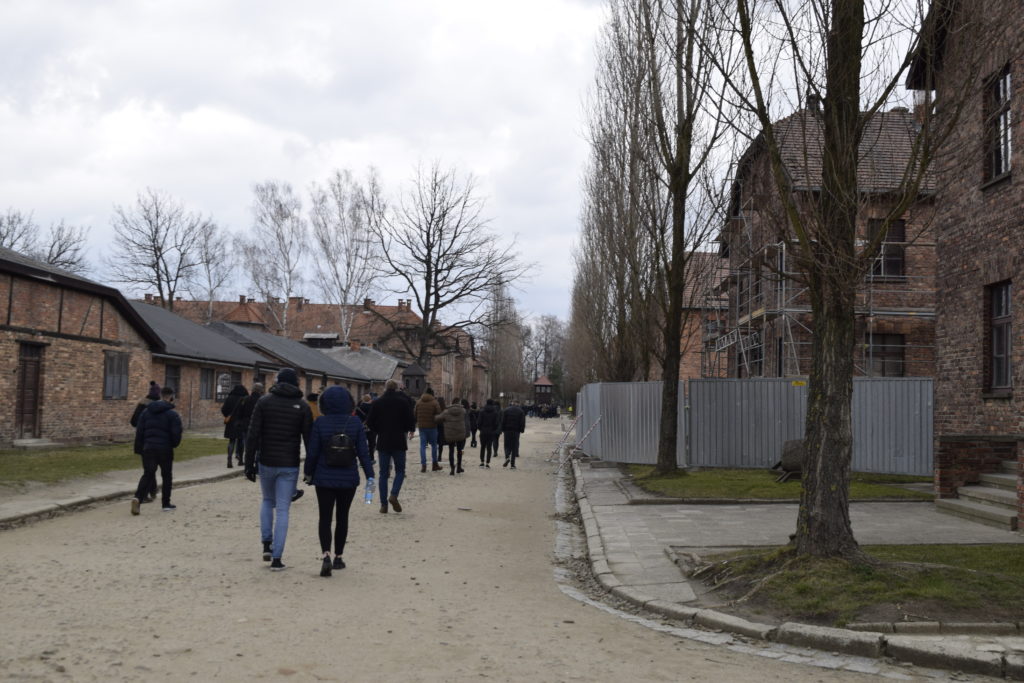
Sometimes it was really strange that so many people were there. It was one guided tour behind another, rows of people – tourists. It is weird to recognize that this place is a touristic one now, somehow it feels not right. On the other hand I appreciate that a lot of people visit Auschwitz and other extermination and concentration camps to remind the history and to be aware that it will be never forgotten.
Because of the amount of visitors and the amount of things to see, we had a strict timetable. Sometimes I wished to have more time to handle all the information and impressions better. But even with the strict timetable we needed 6 hours in total and it is not doable to manage more, whether physically or mentally. The visit was really hard and mentally challenging. I had a lot of feelings like consternation, grief, sorrow, helplessness, being shocked, hurt, despair, exasperation….and so many more which I can’t put into words.
It is so different to know about the things, which happened in Auschwitz-Birkenau and to be there and go on the same floor as the people did, stand in the rooms where the people had to sleep or be so close to the barbed wire. No movie can describe how it is to be in a big corridor with showcases from the ground to the ceiling on each side, full of hair from humans, that were victims of one of the most horrible crimes in whole history. No movie, no words can describe the feeling while you’re standing in a former gas chamber.
After our tour through Auschwitz I we had a break for thirty minutes and then we took a shuttle bus to Birkenau. It’s about 3 km away from Auschwitz.
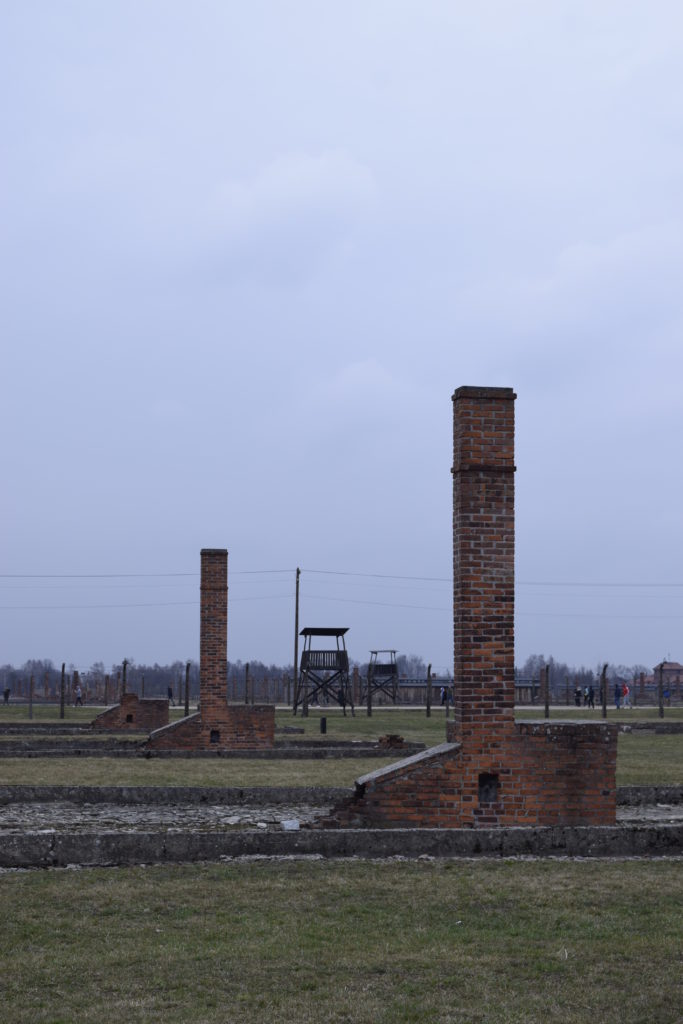
As we walked through the entrance an enormous area was in front of us. It was windy and drafty since most of the former wood “buildings” are not existing anymore and anything what’s left are not more than lonely chimneys on a huge field of lonely chimneys. Perfidious as the Nazis were every barrack had a chimney, but was not heated.
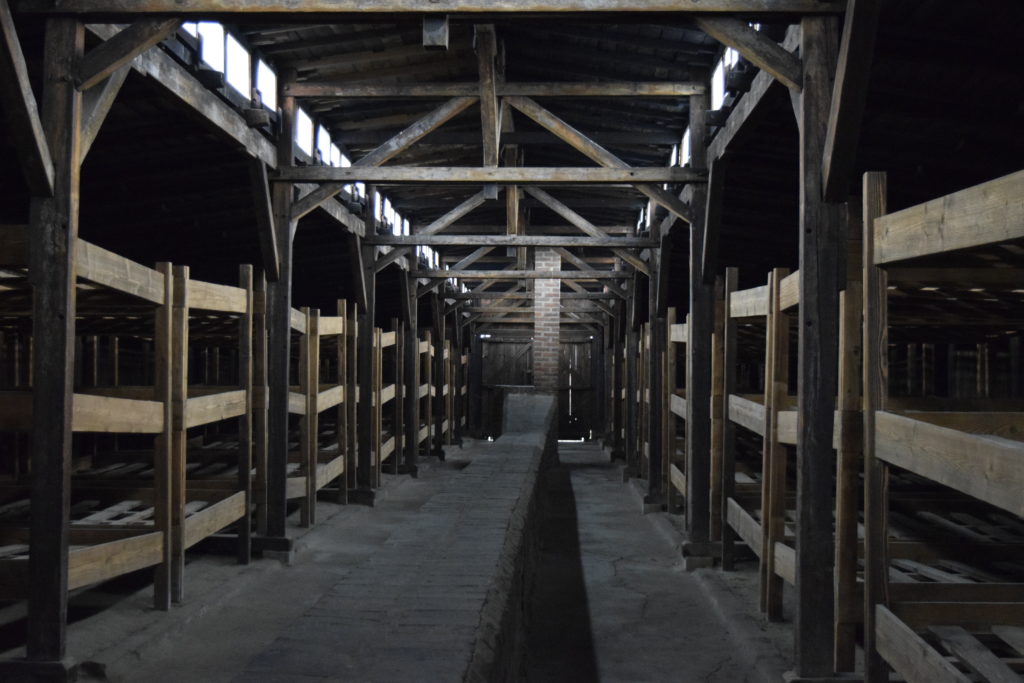
Some lonely wood barracks were rebuilt to show the former circumstances. It is horrible how humans were penned up in those cruel conditions. More than 400 people had to sleep in one of the wooden barracks, which originally should host 51 horses.
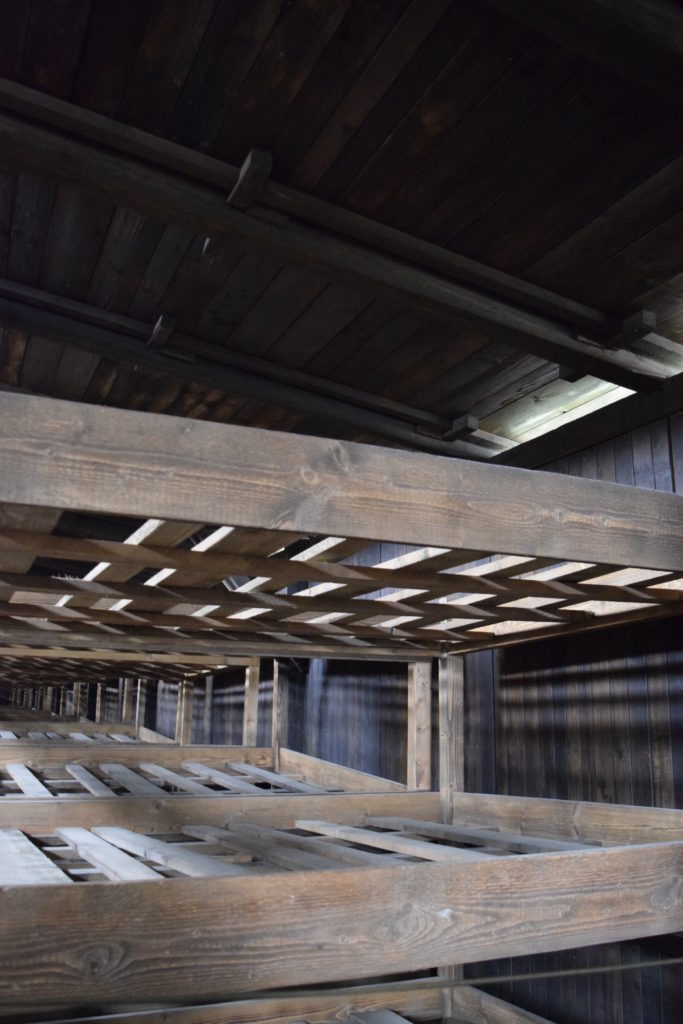
Ten people had to sleep on a pallet with a width of 4 meters. Everything dirty with faeces and bugs. In the summer it was extremely hot and they were not allowed to open the doors and the tiny slits didn’t let enough oxygen in. In the winter it was extremely cold and even if there were chimneys they were barely used. Many people died in those barracks of the cold, too less oxygen and hygiene circumstances.
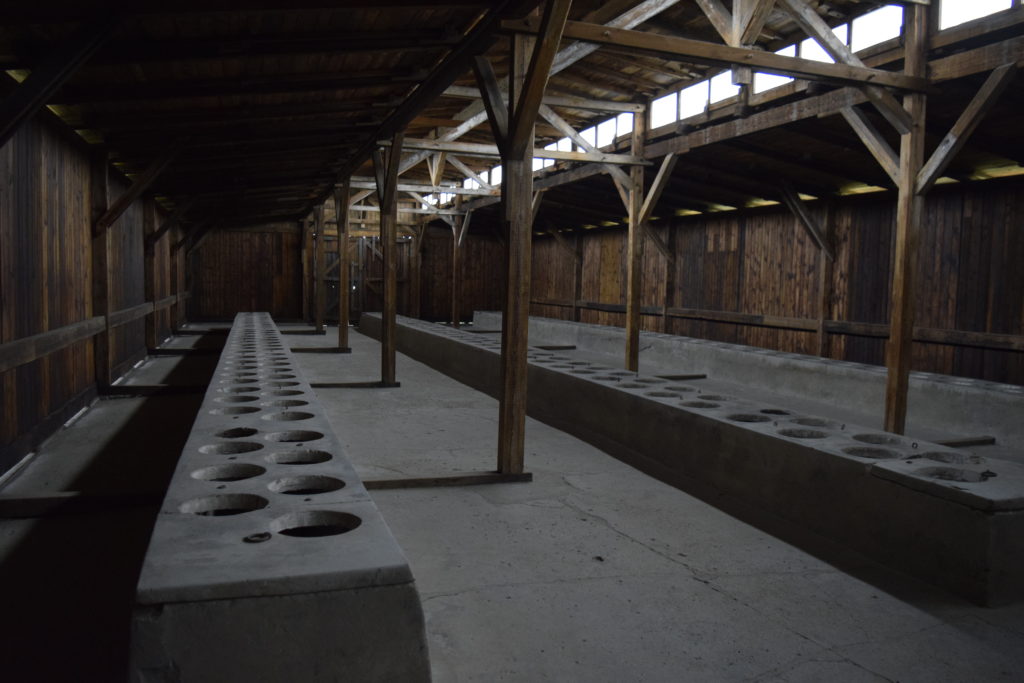
Every morning and evening groups of 200 people were forced to do their needs together side by side with diarrhoea because of hunger and stressed by the guards, only allowed to go to toilet once in the morning and evening. No privacy, no hygiene and barbarous treatment.
After visiting those wooden barracks we walk along the ramp. It was a strange feeling to walk besides the rails, which lead so many people to death. It was scary to stay at exactly the same place where people were selected and the decisions between life and death were done in a few seconds. Around 75% of the arrived people were directly sent to the gas chambers. The others, considered as fit for work, had to do compulsory labour for the Nazis. There are no words to describe the feeling to walk on the same way so many people did without knowing they are going straight into death.
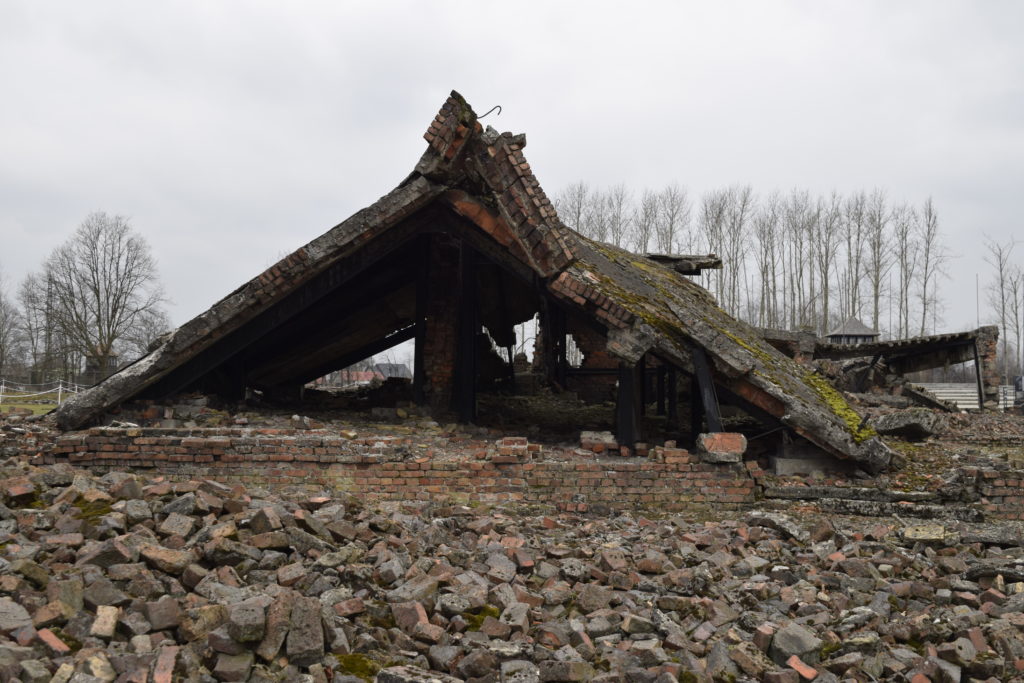
The former crematoriums were mainly destroyed by the SS to annihilate all the proofs of their crimes when they knew they are going to lose. Nowadays you can see just the ruins of it.
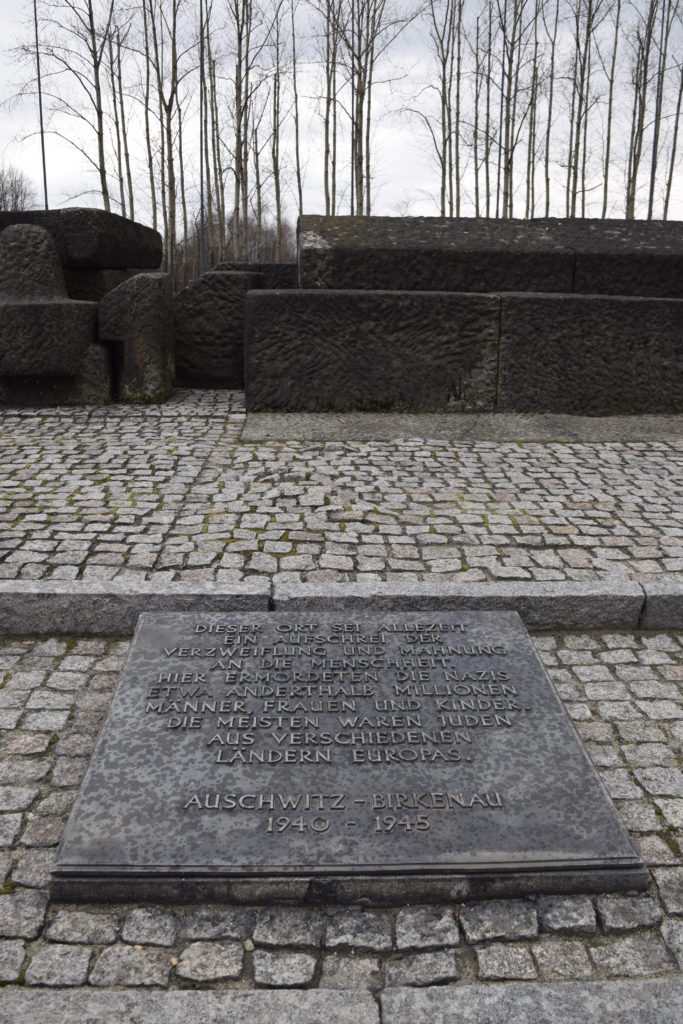
Between crematorium 2 and 3 was build a monument for all people, which died in this extermination camp.
“This place shall be always an outcry of despair and reminder to the humanity. The Nazis murdered one and a half million man, woman and children here. Most of them were Jews from different countries in Europe. Auschwitz-Birkenau 1940-1945” – inscription on the commemorative plaque
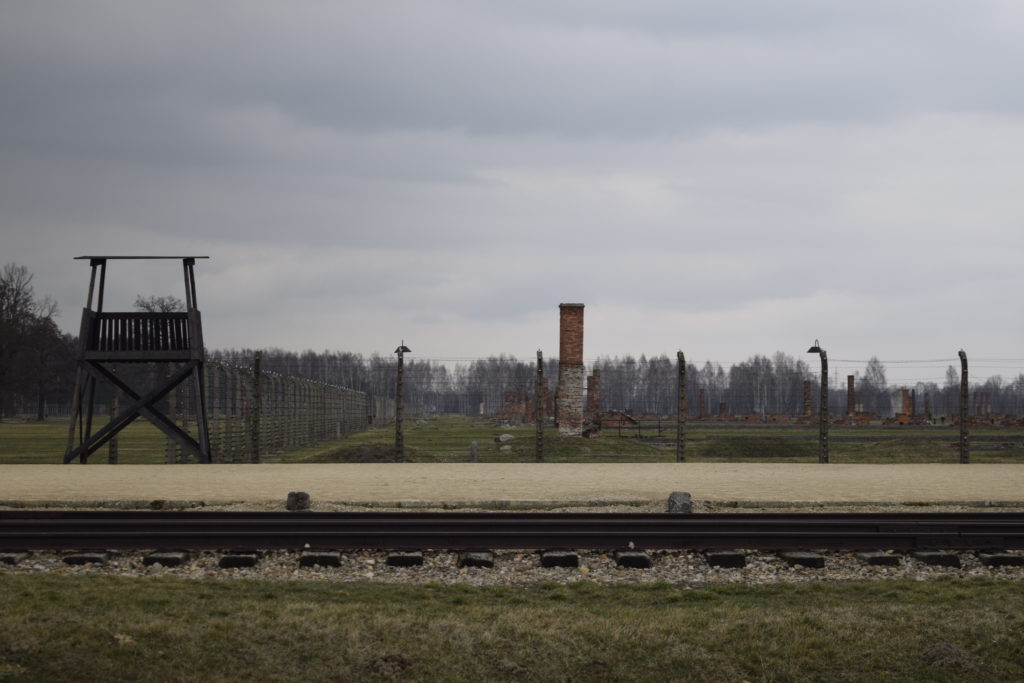
As we walked along the way to the crematoriums we saw the place where Mengele had his own barrack for his outrageous, execrable, perverse experiments.
Mengele was a doctor at Auschwitz-Birkenau. He did a lot of outrageous experiments with twins. For example he did surgeries without anesthesia to compare the sensitivity of pain. Most of the people he used for his experiments died in them. He treated humans like test objects and caused them with pleasure horrible pain. Before the red army arrived Mengele escaped. Afterwards he worked under assumed names, moved to South America and travelled many times back to Europe, but he was never caught. One reason was for sure the bad international collaboration and the focus on other Nazi criminals like Adolf Eichmann. Nevertheless the most important fault was the ignorance in the German society in the years after the war. The majority didn’t cared about a thorough confrontation with their history. Furthermore many former Nazis were still in their high positions especially judges and lawyers and they had no interest in prosecuting Mengele. Fritz Bauer was an exception, he tried a lot to bring Nazi criminals to justice, but unfortunately Mengele was never caught. I will never understand how it was possible that he could live peacefully and free until his death.
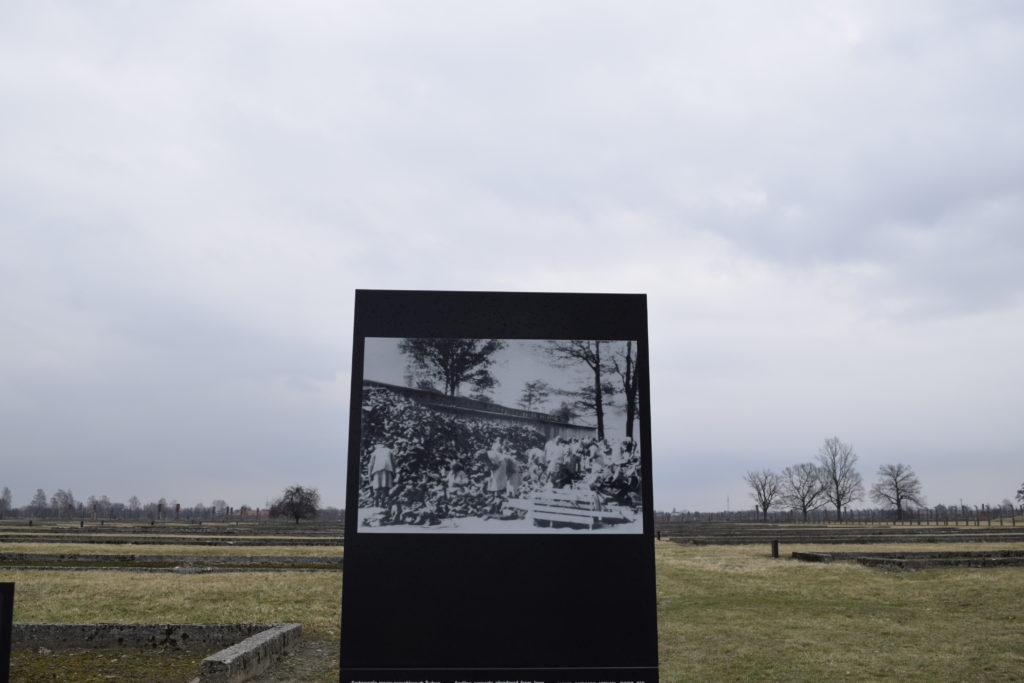
After their arrival people had to leave all their brought stuff at the ramp. Afterwards it was collected and sorted and good things were brought to the Reich. The rest was stored in another part of the camp which was called “Kanada”. Up to thirty barracks were filled with clothes, dishes, glasses, shoes and suitcases.
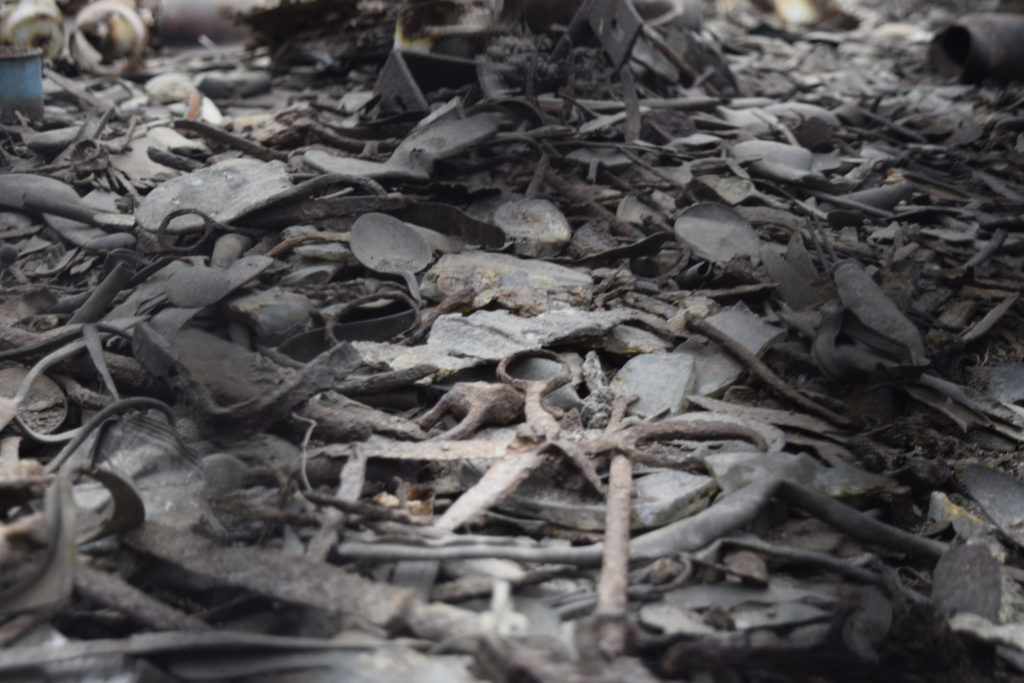
All those things from daily life underline that the people really believed that they are going to start a new life somewhere else, that they will continuing to live.
The Nazis burned “Kanada” at the end of the war to destroy proofs.
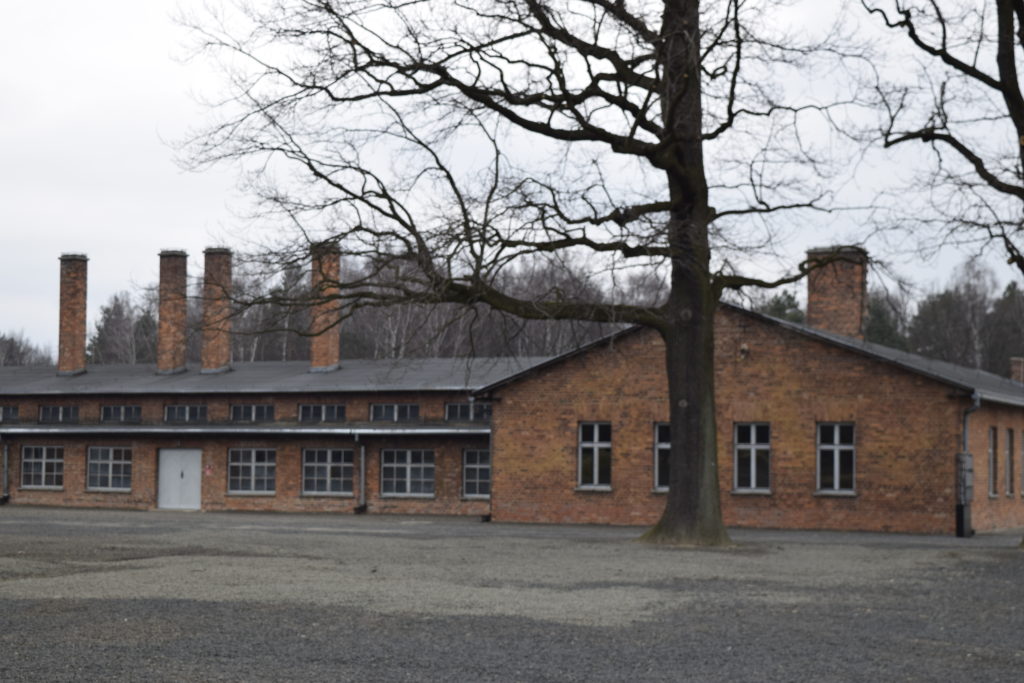
Next to “Kanada” there is a brick building named “Sauna”. It was the place where arrived people had to get undressed, were shaved and examined. Furthermore it was for cleaning clothes.
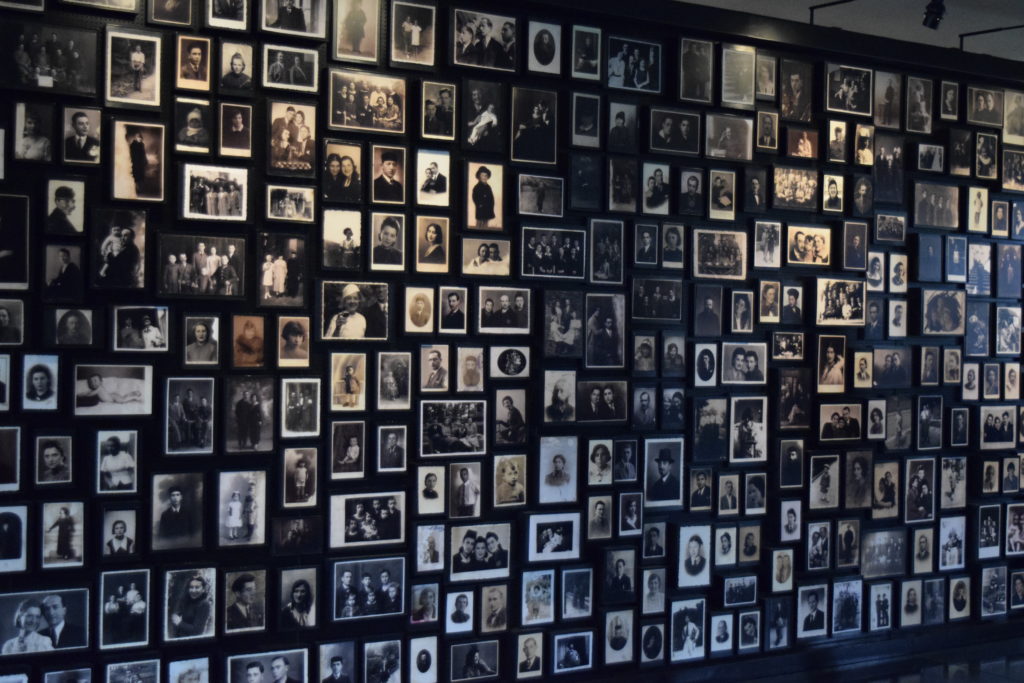
Nowadays an exhibition of gathered pictures of relatives, friends and lovers the people had with them, is placed in one of the rooms. So many faces….never saw their loved ones again.
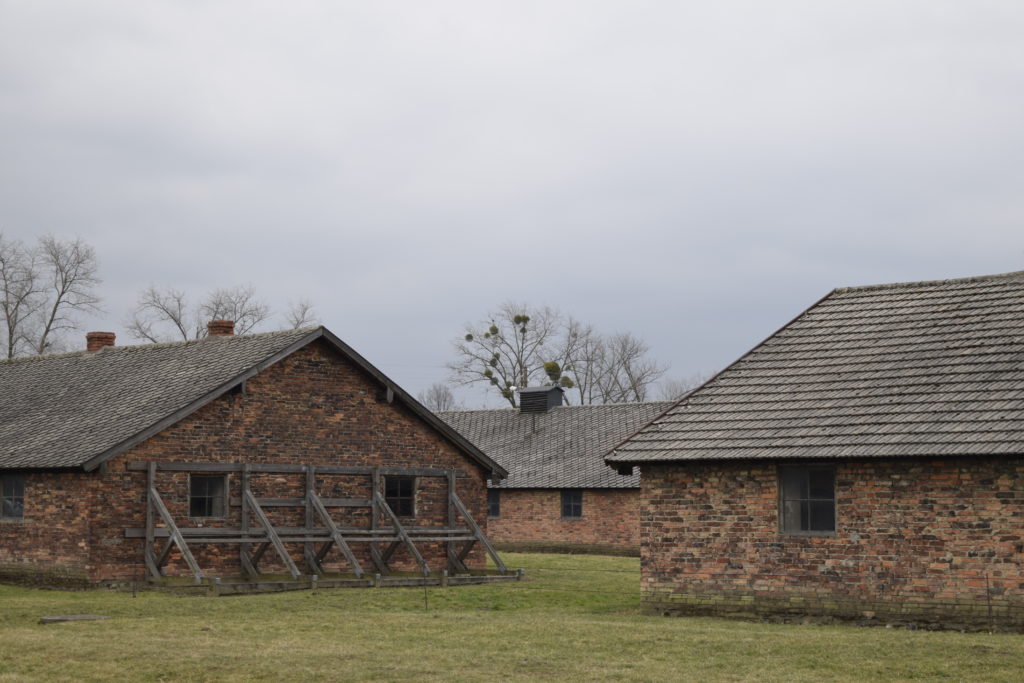
After our guided tour was over, Benedikt and I went through the part of the camp where woman were lodged. Most of the buildings were made out of bricks not like the barracks out of wood. Therefore most of them still exist, but time left it marks and nearly every building needs beams as support.
It reminded me how important it is to care about this place, maintain it and to remind about this topic. With time more and more people, who survived the Holocaust, will die, buildings will collapse and the memory will fade if we don’t keep it awake. Movies, documentations, pictures and interviews are really important, but as I said it is totally different to visit places like Auschwitz. You are so much closer to history here. Therefore it would be great if more schools would visit with their students a former concentration or extermination camp or invite witnesses of this time. It’s up to all of us to keep the memories awake! Because “Those who don’t remember the past are condemned to repeat it” (George Santayana).
